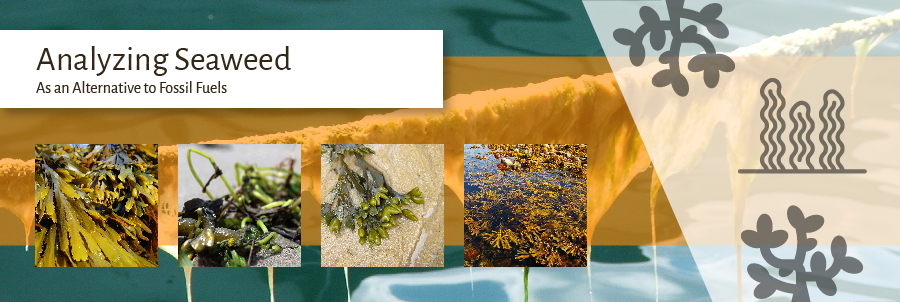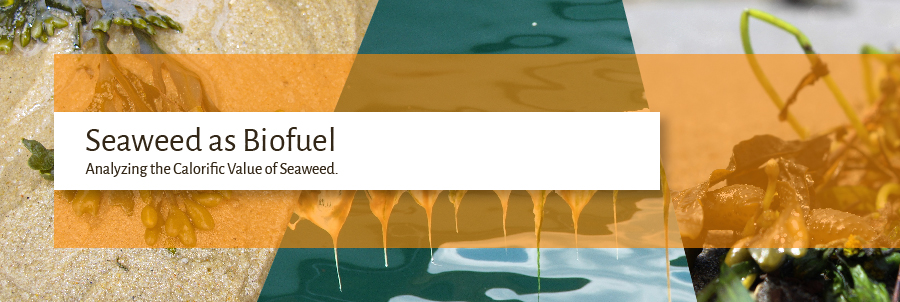
ANALYZING SEAWEED AS AN ALTERNATIVE TO FOSSIL FUELS
The potential of seaweed as biomass for energy production can be analyzed based on it's calorific value, which is measured using an oxygen bomb calorimeter system
(See the DDS Calorimeters range of oxygen bomb calorimeters).
On analyzing seaweed it is found that it has a comparable calorific value with that of the conventional biomass fuels like bagasse, rice husks and corn hobs.

SEAWEED AS BIOFUEL
Some countries have an abundant supply of biomass resources which includes agricultural crops (rice hulls, coconut husks and meat, cocoa, cassava and bagasse), saw mill (from forest logs) and furniture residues (sawn timber). Due to constraints an alternative, such as aquatic biomass (algae), can be used as feed stock for second-generation bio-fuel and bio-energy production.
Using seaweed as biofuel has the advantage of higher growth rates compared to crops and avoids competing with the agricultural land. With the serious problems posed by global warming and the rapid depletion of oil reserves today, the use of aquatic biomass energy is now being considered as a means of energy. Processes that are considered for energy generation from aquatic biomass include direct combustion by a bomb calorimeter.
Seaweed species suitable for biomass energy should display high productivity in terms of standing crop and biomass yield. The species should be easily cultivated and harvested. Chemical composition of seaweeds should also be accounted for since it determines the fuel quality and dictates the process of energy production.
CALORIFIC VALUE OF SEAWEED
Good knowledge of the heating or calorific value of a fuel and its ash compositions is needed for control of ash-related conditions such as slagging, fouling, or erosion, management of environmental emissions, heat rate calculations, and modifying operating parameters. The calorific value of a material is the amount of heat released by a material during combustion. It is affected by the ash and moisture contents of the biomass. The ash content of a fuel lowers the calorific value and may cause problems at high temperature combustion. The calorific value decreases with increasing moisture content. The presence of moisture in fuel lowers its effective heating value since a portion of the heat of combustion is utilized in evaporating the container moisture, hence decreasing the calorific value. The moisture content is kept as low as possible.
The calorific value can be determined using calorimetry to determine the higher heating value.
MATERIALS AND METHODS
Seaweed is collected from different locations to test its effectiveness as a bio-fuel. Seaweed samples are cleaned with water and excess water is removed from the samples with tissue paper.
The samples are then sun dried to remove moisture, where after the moisture content is analyzed and samples are tested for their calorific values using a bomb calorimeter system.
CONCLUSION
Seaweeds have a high potential to be used as solid bio-fuel since it has a comparable calorific value to conventional biomass like rice husks and corn cobs. However, the seaweed needs to be dried to remove the moisture content in order to obtain a calorific value close to that of conventional biomass.
Reference : USC Chemical Engineering Student Research - Calorific Value and Proximate Analysis of Sargassum spp.


Dear Alejandro,
My apologies for the delay in sending you a reply. Unfortunately this is sample type which we have not been able to analyse ourselves. We would be willing to run some analysis on a sample if you have which we would be happy to provide the method and results for.
Thanks
Desiree
Dear Desiree,
Thanks for your reply.
Can you please send address details and requirements in order to send a sample to be analyzed?
Best regards
To whom it might concern,
Any information or study you can share about dry sargassum fluitans and/or sargassum natans caloric value?
Thanks for your attention
Regards